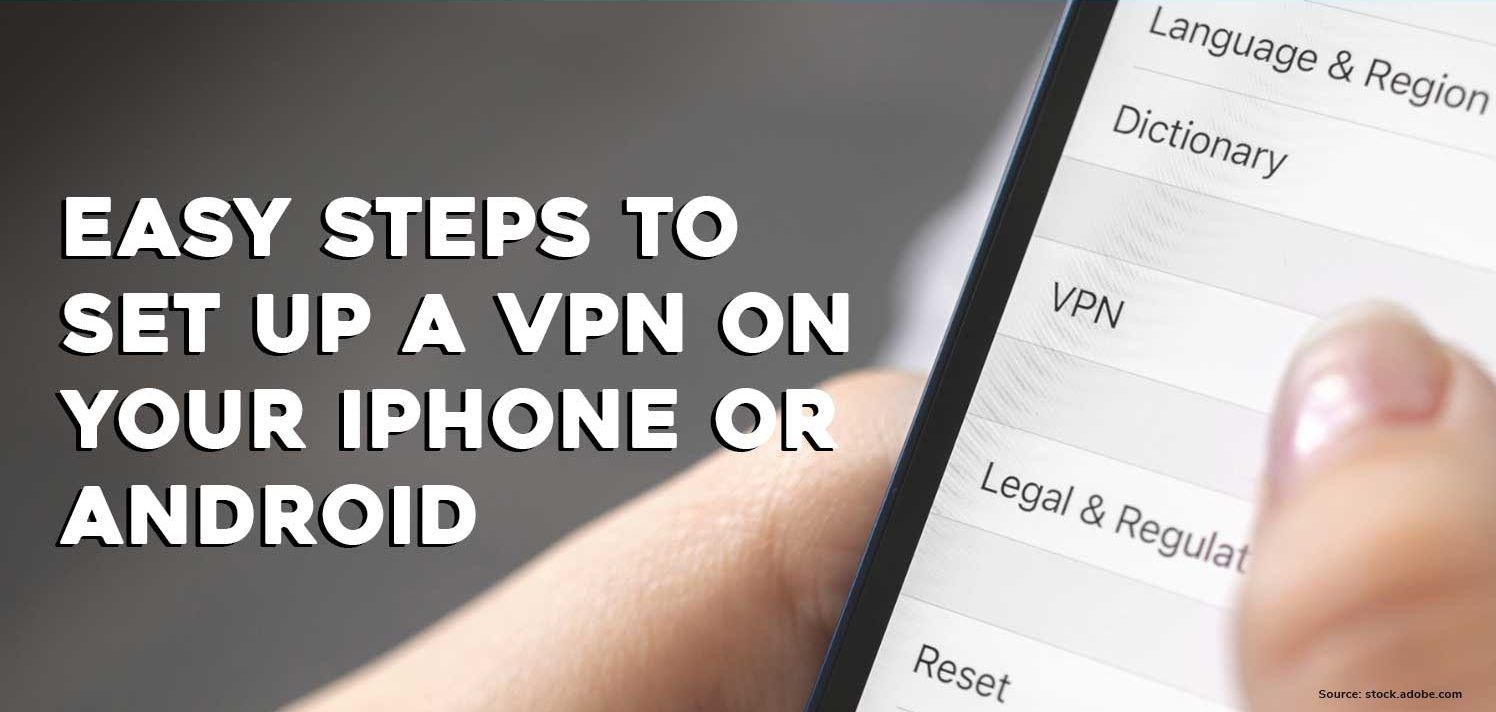At nights, it is a common practice for us to check if our windows and doors are closed. Likewise, we need to do the same for our websites and when we surf the Internet. Besides large companies with personal or financial data of clients, the average person has started to set up a VPN at home to ensure that while they are online, they are protected from intruders trying to snoop around.
As mobile phone usage has increased, quite arguably as a result of social media, the same or even greater levels of security is needed when surfing the web. In this article, we share 6 easy steps to set up a VPN on your mobile device. Before we dive right in though, first things first; let’s start with the basics.
What is a VPN?
A Virtual Private Network or VPN is a service offered to encrypt one’s data and identity. It is done by routing the data and IP address through several VPN servers, making the connection difficult to trace. In simple terms, it is an extra layer of security which aims to conceal one’s identity while browsing the web. It provides several benefits such as: conceal the users’ whereabouts, secure data transfer and enable secure encryption.
What are the different VPN Protocols?
When you are about to set up a VPN manually, you will come across five (5) protocols for VPNs. VPN protocols are a set of rules or guidelines used to determine how the channel should be formed.
Open VPN
Open VPN uses AES 256-bit encryption and is one of the most popular and secure VPNs. However, while it can work on many operating systems, it is not independent therefore it requires third-party support.
PPTP
Point-to-Point Tunneling Protocol (PPTP) is the first protocol developed by Microsoft in the 1990s. It is one of the fastest VPNs available today as a result of it low encryption function.
L2TP/IPSec
Layer-to-Tunnel Protocol does not provide any encryption. It is predominantly a channel that connects the user to the VPN server. L2TP is often paired with IPSec which provides the encryption and privacy needed.
IKEv2
Internet Key Exchange version 2 (IKEv2) is fast, stable and secure and is normally paired with IPSec. IKEv2 was jointly development by Cisco and Microsoft and is regarded in many circles as a great protocol for handheld devices because of how quick it can establish a connection when switching connectivity (from cellular to Wi-Fi).
IPSec
Internet Protocol Security or IPSec, while can be used on its own, it is usually paired with L2TP or IKEv2. The normal use of IPSec is geared at data encryption for IP addresses.
How to set up a VPN on your mobile phone?
The easiest way to set up a VPN on your mobile phone once you have access to a service provider is to simply visit the Google Play Store or Apple App Store and search for an ideal VPN with good ratings. After installation, you would simply follow the instructions and you are set to go.
However, the option of setting up a VPN connection manually on your iOS device or Android device is still possible. This option is best suited for an individual that wants more control over their VPN.
How to manually set up a VPN on your iOS device?
To configure a VPN on your iOS device, you simply:
- From your home screen, go to Settings
- Select General
- Choose VPN
- Add VPN Configuration
- Configure your VPN Connection: enter the information provided by your VPN service provider in the required fields such as server address, username and password and select the VPN protocol. Depending on the type selected, you will be asked to select Pre-Share Key or a remote ID. Select the appropriate option that best suits your setup.
- Select Save
How to manually set up a VPN on your Android phone?
- From the menu screen, Go to settings
- Select Connectivity
- Select More
- Choose VPN
- Configure your VPN Connection: enter the information provided by your VPN service provider in the required fields such as server address, username and password and select the VPN protocol. Depending on the type selected, you will be asked to select Pre-Share Key or a remote ID. Select the appropriate option.
- Select Save
In closing
When we said easy steps, we did mean easy steps. If you follow these steps closely, you should be well on your way to having a VPN set up on your iPhone or Android phone.
VPNs are becoming a common part of our lives. With the aim to protect valuable and sensitive data that is being shared online, VPNs have become a safety net for our online activities. Whether you are using a public Wi-Fi, sharing sensitive information or just crave privacy, VPNs offer that exclusive benefit. Hopefully with these 6 easy to follow steps, you will be able to use the internet with a greater sense of security and perhaps can even open your windows for some cool natural breeze while doing so.



